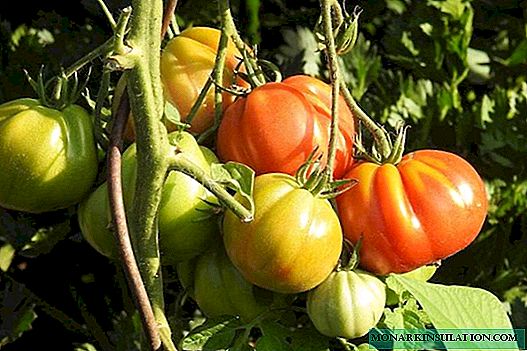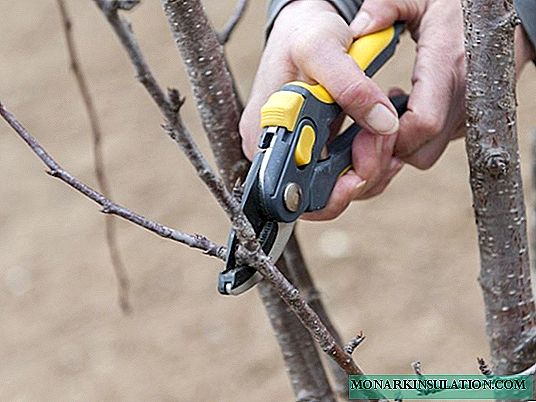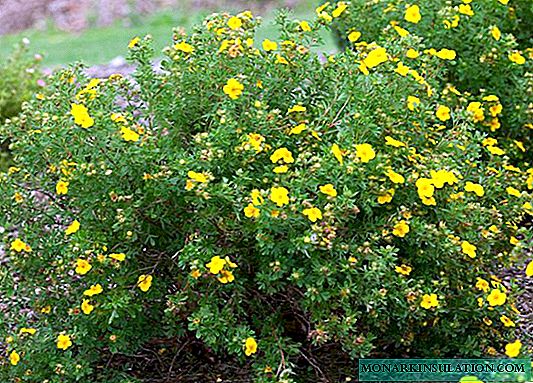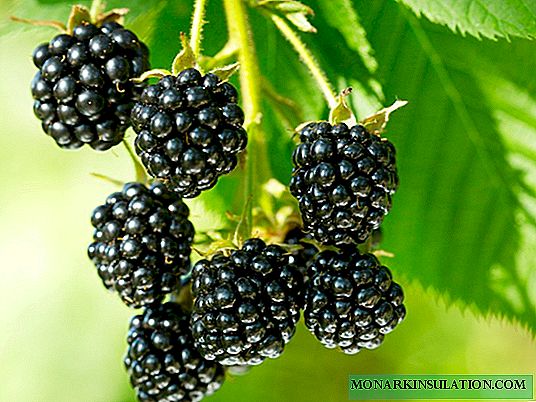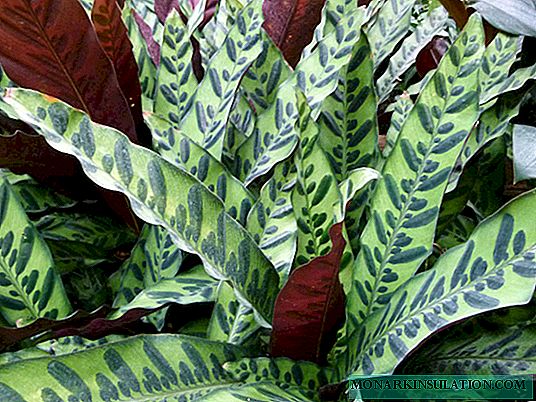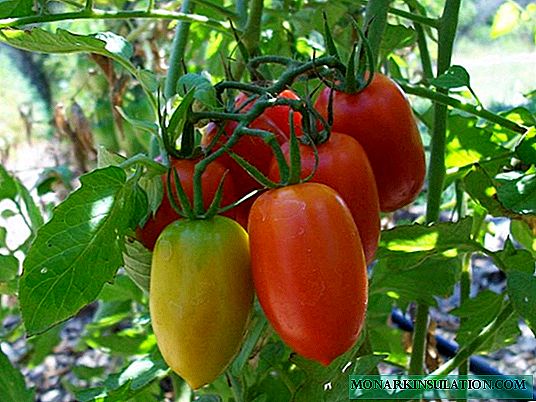One of the most famous and common orchid species of orchids - Miltonia (Miltonia) - appeared in Russia from the forests of Brazil and Colombia, where it grows freely in natural conditions. Not very complex in content, the flower resembles an elegant exotic butterfly.
Miltonia: Popular Varieties
A large assortment of varieties and hybrids of miltonia is on sale. The shape of the flower is a bit like pansies, only much larger. There are all kinds of color variations of velvety petals: white, beige, yellow, pink, purple. The aroma is palpable and pleasant. The diversity is based on 20 major species, of which more than 40 hybrids are obtained.
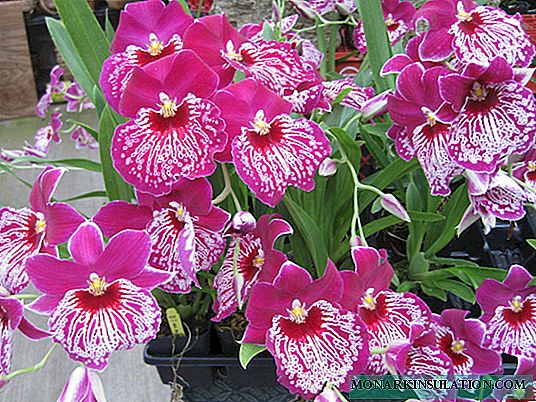
Miltonia Morris Chestnut
Epiphytic orchid has elongated rhizomes and single-membered pseudobulbs, flattened on both sides. Leaves grow of two types - rhizome and apical. Inflorescences lateral on long stems.
Important! Miltonia should not be confused with Miltoniopsis. These are closely related orchids, numbering six species and, until recently, combined with the genus Miltonia. But scientific studies have proven their genetic differences.
Miltonia Mix
Under this trade name, planting material is sold in which the shade of future flowers is not known in advance. These are various variations of pink, purple, white and reddish colors. You need to take care of them in the same way as for other species, observing high humidity and diffused dim lighting.

Miltonia mix
Miltonia yellowish
The plant grows up to a height of 50 cm. The flowering period is from September to January and from April to June. The peduncle up to 1 m long usually has 7-15 buds that bloom into star-shaped corollas of a white-yellowish hue up to 8 cm wide. A lip with a wavy edge has 4-6 reddish-purple stripes.
The variety needs a large difference in daily temperatures (15-17 ° C - at night, 25 ° C - during the day). For a short time, it can endure a more serious decrease in air temperature. Oval yellow-green pseudobulbs are located on a creeping rhizome at a distance of 3 cm from each other. Narrow belt-shaped leaves are up to 30 cm long. During the period of active growth, it needs weekly top dressing. Optimum humidity 80%.

Miltonia flavescens
Miltonia Morella
For a long time they believed that this is a variation of the brilliant miltonia, but today it is considered an independent species. Flowers are brighter than brilliant, and larger. Pseudobulbs are even more flattened. The rhizome part of the shoot is covered with scaly leaves. The size of the flowers is a plum-purple hue with a light spot at the base up to 10 cm in diameter. Lip length 5 cm, its color is lighter - pink-purple with dark longitudinal veins. The flowering time of each bud is six weeks.

Miltonia Moreliana Henfr
Miltonia is brilliant
This species is characterized by ovoid-elongated pseudobulbs up to 10 cm long. Their hue is greenish-yellow. The shape is flattened from the sides. Rhizome areas of shoots are well developed. The length of the roots is up to 10 cm. The leaf is linear-belt-shaped with a rounded tip of a greenish-yellow hue up to 15 cm long. The length of the inflorescences is up to 25 cm, on which up to 20 buds are located.
Shades are different: from saturated plum-purple to white. The lip is large (up to 5 cm long and 4 cm wide) oblong slightly narrowed at the base, has dark longitudinal stripes and a brightened wavy edge. The flowering period is spring and the second half of summer. Each flower lasts up to four weeks.

Miltonia spectabilis
Miltonia Varshevich
Orchid is from Central America. Leaves with rounded ends are up to 14 cm long. It forms a multi-flowered inflorescence, sometimes branching, with flowers up to 4 cm in diameter. Sepals and petals are similar, oblong in shape with an extension at the end. Painted in red-brown, white and yellowish colors. Violet-purple lip is wide, bilobate with a white edge. In the center is a reddish-brown disc. The duration of flowering is from August to April. The most active buds bloom from February to March.

Miltonia Warczewiczii
Orchid miltonia: home care
This perennial epiphyte prefers coolness and high humidity in the range from 50 to 90%. Do not put pots on radiators. During the day, you need to maintain a temperature of 24-26 ° C, and at night - lower to 15-17 ° C. More severe cooling leads to freezing of foliage, which can even dry out from the pseudobulb.
Humidity
Orchid is usually watered every other day or once every 3 days. The mode is selected based on the humidity in the room. The ideal condition of the soil in the pot is constantly wet, but air freely passes through it. For watering, it is best to use a distillate, in which top-dressing is periodically administered. But filtered, boiled and warmed to room temperature water is also suitable. The watering process looks like this: the pot is immersed half the height in a container with prepared water, and sprayed on top of the moss. After they put the pot on the pallet and wait until all the excess water drains. Then they put it on a dry tray.
An indicator of the well-being of the plant is its leaves. If they suddenly acquire a relief with an accordion, this indicates overmoistening. To help the roots recover, you need to rearrange the pot for a day or two in a warm, dry place.
Note! With the complete destruction of the roots, soaking pseudobulbs will help to build new ones. It is placed in a container of water and waiting for the growth of new roots. Water is changed every day.
The optimum humidity for miltonia is 60-80%. However, the room must have good ventilation. If the humidity is too low, the leaves begin to curl. You can not spray them, you can only moisten the air around. To do this, put the pot on a pallet with wet expanded clay. When waterlogged with hypothermia, decay processes begin. At the first sign, all damaged areas are immediately removed, and the orchid is transplanted into fresh soil.
Lighting Tips
In the wild, miltonia is found in Argentina, Paraguay, northeast Brazil, Peru and Central America. In the jungle, it grows at an altitude of 200-1500 m, but most of it occupies a height of 600-900 m. Flowers bloom in the shady areas of the forest and in lighted areas, but never in direct sunlight.
Sunlight should be diffused, while the brightest light is enough for only 2-4 hours. The rest of the time, partial shade is enough. The more light, the brighter the leaves, and when there is not enough sun, they become dark green. Redness and yellowing indicate that the pot needs to be moved away from the window, since the leaves were burned.
Top dressing and soil
Soil for miltonia is the most important. The usual substrates are not suitable for her. It is best to prepare the mixture yourself. To do this, take large pieces of pine bark, coconut fiber, moss and peat. All in equal proportions. The result is a loose mixture through which air passes unhindered. The pot is filled, laying on the bottom of the bark, and moss on top. In extreme cases, you can buy ready-made soil.
During the period of forcing flower stalks, top dressing is carried out with special fertilizers for orchids. Some types of food are enough one feeding in 2 weeks, but others need them every week. It is better to check with the seller of planting material. The concentration of the solution is four times less than the manufacturers recommend. An overabundance of nutrients is extremely detrimental to miltonia. She needs a nitrogen-phosphorus-potassium complex with the formula 18-18-18, or 20-20-20. Toward the end of the new growth, they stop feeding, allowing the orchid to go to rest.
How to transplant miltonia
Experts insist: the transplant should be done immediately, as soon as the purchased pot with an orchid is delivered to the house. The best time to purchase is spring. Almost all orchids really do not like when their roots are disturbing, but it is impossible to do without it. It is important not only to remove the flower from the substrate, but also to check all its parts in order to detect and remove rotten areas in time. If the disease has settled, and the root has rotted, then it becomes soft to the touch and acquires a dark brown color instead of a healthy greenish-whitish one.
Old soil can only be used for mulching in the garden, but not repeatedly. Only adult plants that have completed flowering can be transplanted (peduncles dried out). It is important to carefully use the tools used in the work with alcohol or sprinkle with sulfur powder. Orchids are very easily infected, so you need to take care of their protection against bacteria.
Important! All sections and damage are sprinkled with powdered powdered activated carbon.
It is advisable to buy a new pot transparent to monitor the condition of the roots and give them the opportunity not to stop the photosynthesis process. At the bottom there should be large openings for water drainage. Each subsequent pot is selected deeper and wider by at least 2 cm, but they are guided by the volume of the root mass. Recommended to transplant every 2 years.
Transplantation process in stages:
- Remove the orchid from the pot.
- The roots are washed in a basin with clean water. If they entangled pieces of bark, then they are left as is.
- Dead or withered leaves, as well as dried inflorescences, are removed.
- Reproduction is carried out by separating the rhizome sections with three healthy pseudobulbs.
- The soil is covered with slightly damp, but do not tamp it. Sphagnum is laid out on top, creating an optimal microclimate.
Important! Partially, the root system will die during the transplant; this cannot be avoided. It will take about 6 months to recover.
Miltonia flower in care is a little more complicated than phalaenopsis, since it is more demanding on temperature and humidity. It will take patience and some experience. If the orchidist has the opportunity to provide a temperature difference between day and night of about 8-10 ° C, then its flowering will not take long and will please with splendor and bright colors.

